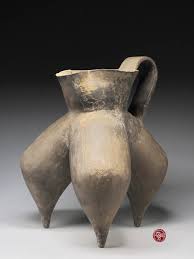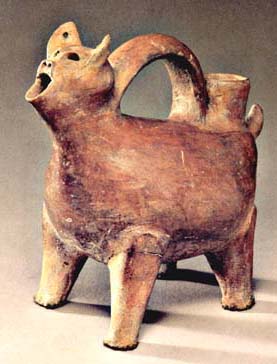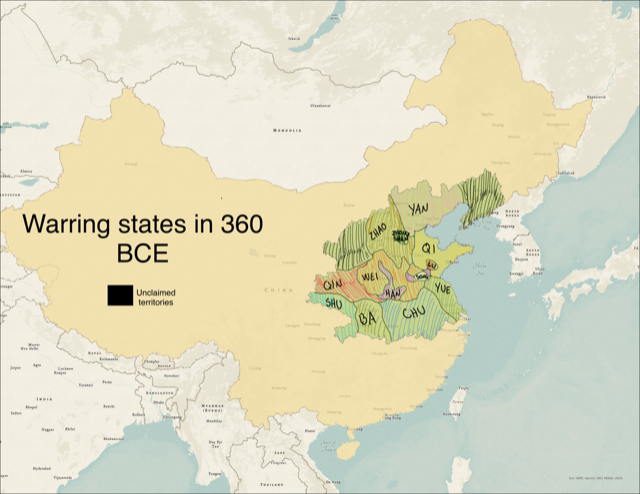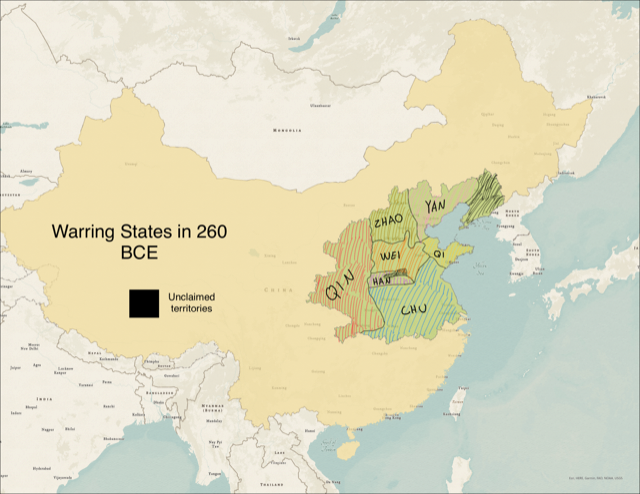The Warring States Period: The Formation of the First Imperial Dynasty of China
Simone Tripoli
The history of China spans roughly 5,000 years. Within this large time span, several important events occurred that shaped the development of the region.

Some of these events would include the communist revolution in 1949 CE
the Age of Invention in 1088 CE where things like printing, paper money, gunpowder, and the magnetic compass were invented.
or even the establishment of the Mandate of Heaven in 1046 BCE.
However, probably the most important event that shaped Chinese History was the Warring States Period (475 - 221 BCE). This was a significant period as it led to the unification of China in 221 BCE.

But before we get into this important event in Chinese history, let's get a lay of the land, and try to understand what led to this fractured period. This is modern day China.
The center of Chinese civilization is known as the Central Plains. This is because ancient chinese people believed that their land was the center of the world.
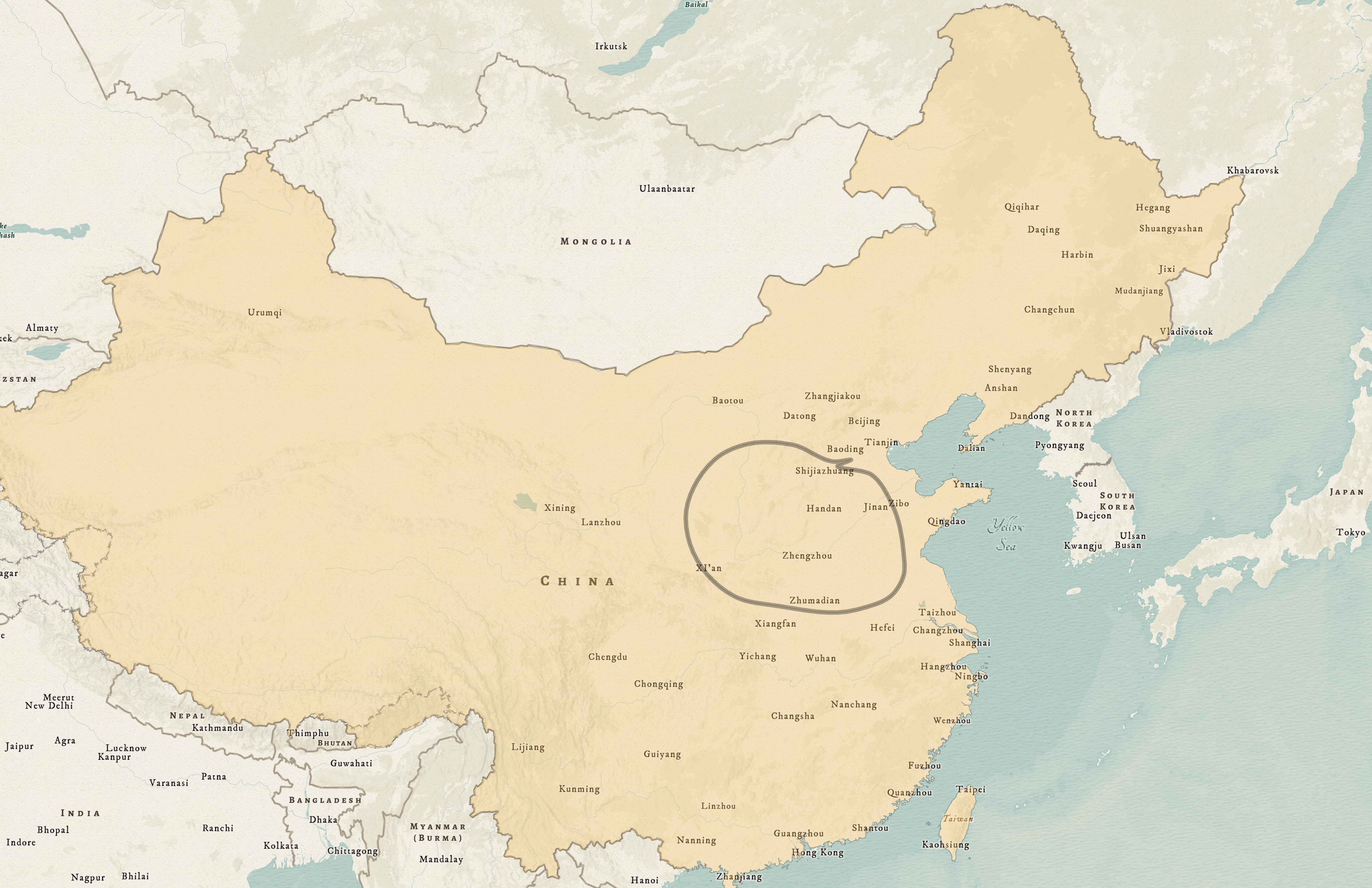
As mentioned earlier, chinese history spans roughly 5,000 years. The beginning of this chinese cultural sequence was known as the Three Soverigns and Five Emperors period. This cultural period is prehistoric, or pre-written records, and it is not very well-known. However, several important cultures (e.g., Longshan, Yangshao, Dawenkou, etc.) lived during this period that dates to c.3162 BCE to 2070 BCE. This period saw the development of several types of artifacts, the main one being pottery.
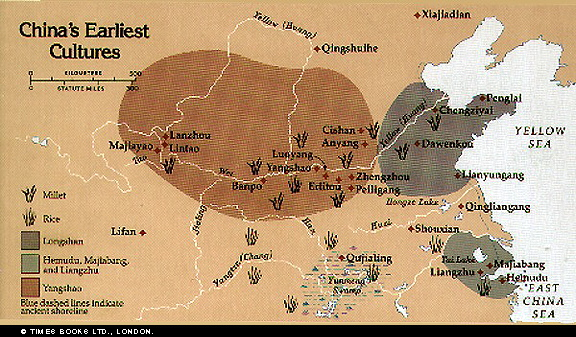
Soon after the 3 Sovereigns and 5 Emperors period, chinese history shifted into the early dynastic period. This era in chinese history witnessed the rise of three dynasties. These dynasties are the Xia (c. 2070 - 1600 BCE), Shang (c. 1600 - 1050 BCE), and Zhou (c. 1050 - 221 BCE).
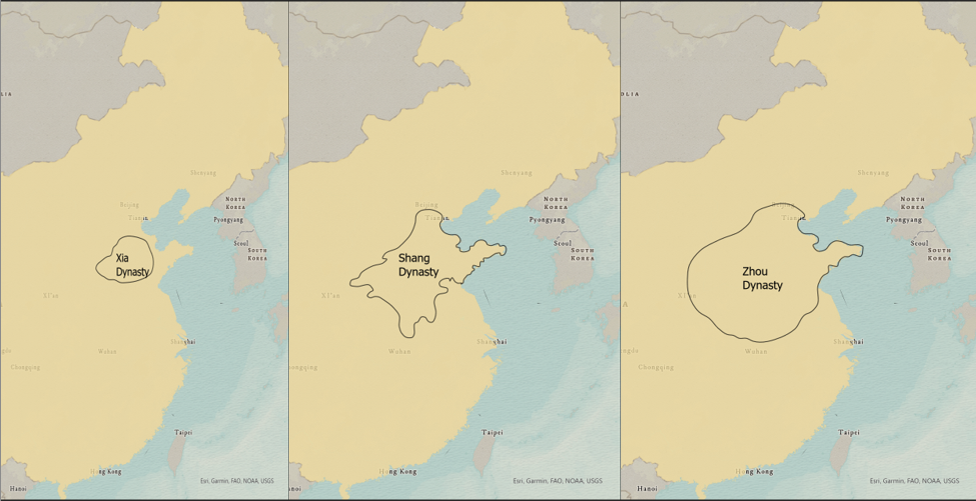
During this period, we see several different types of innovation. Some of these innovations are cultural like the use of turtle shells or ox bones as a form of divinition during the Shang Dynasty (1600 - 1050 BCE). These are known as oracle bones.
Other types of innovation were technological developments. These innovations included writing, architecture, silk, jade, but probably the most abundant example of innovation comes from bronze. In the archaeological record, the first examples of bronze in China came during the Xia Dynasty (2070 - 1600 BCE)
The last type of innovation would have been political like the mandate of heaven, which began during the Zhou Dynasty (1050 - 221 BCE). The Zhou believed that those chosen by the Mandate of Heaven were the representives of the supreme god Shangdi on earth. As long as things were going well in the kingdom, that ruler enjoyed the highest amount of respect, but if things were going poorly it was taken as a sign by the heavens that it was time for a change.
Now that we have some context about the region and the time period, let's dive into the Warring States Period. The Warring States period was the end product of several negative factors coming together. It started after the fall of the Western Zhou capital city, Haojing, which forced the Zhou kings to establish a new capital to the east called Luoyang. This is known as the Eastern Zhou period (c. 771 - 221 BCE), which is divided into two major phases: the Spring and Autumn period (c. 770 - 476 BCE) and the Warring States Period (c. 475 - 221 BCE). The Spring and Autumn period is associated with the decline of Zhou kings' authority over the central plains.

This loss of authority by the Zhou kings led to the formation of several states. The Warring States period was dominated by 7 states in particular. These states are the Qin, Chu, Zhao, Wei, Han, Yan, and Qi.
At the beginning, the Wei and the Chu states were considered the strongest of these 7. In fact, they dominated most battles for almost a century. It wasn't until c. 361 BCE, when a man by the name of Shang Yang migrated over to the Qin state, that things started to change.
Shang Yang kick started legalist reforms in the Qin state. These reforms became known as legalism. Legalism was created under the basis that human beings were more inclined to do wrong because their motivations are driven purely by self-interest.
Therefore, to reign these wrongful impulses, people needed a strict sets of laws to control them. These reforms eventually made the Qin state the most powerful state of the region.
By 230 BCE, the king of the Qin state, Ying Zheng, finally started conquering the other states. In 226 BCE, the Qin conquered the Han and parts of the Zhao state.
Between 225 and 222 BCE, the Qin conquered the Wei, Chu, Yan, and the rest of the Zhao state.
Finally in 221 BCE, the Qin had conquered the Qi state, thus unifying China for the first time in its history.
References
Chang, Kwang-Chih. 1977. The Archaeology of Ancient China. Yale University Press.
Harvard University, Academia Sinica, and Peking University, China Biographical Database (CBDB) (January 1, 2018), https://projects.iq.harvard.edu/cbdb.
Lewis, Mark E. 2007. The Early Chinese Empires: Qin and Han. Harvard University Press.
Quan, Chris. “15 Facts about Warring States Period in China.” Warring States Period, 2021, https://www.chinahighlights.com/travelguide/china-history/warring-states-period.htm.
“The Zhou Dynasty of Ancient China.” TimeMaps, 5 Sept. 2022, https://timemaps.com/civilizations/the-zhou-dynasty-of-ancient-china/.
All images not made by the author were taken from Google Images


